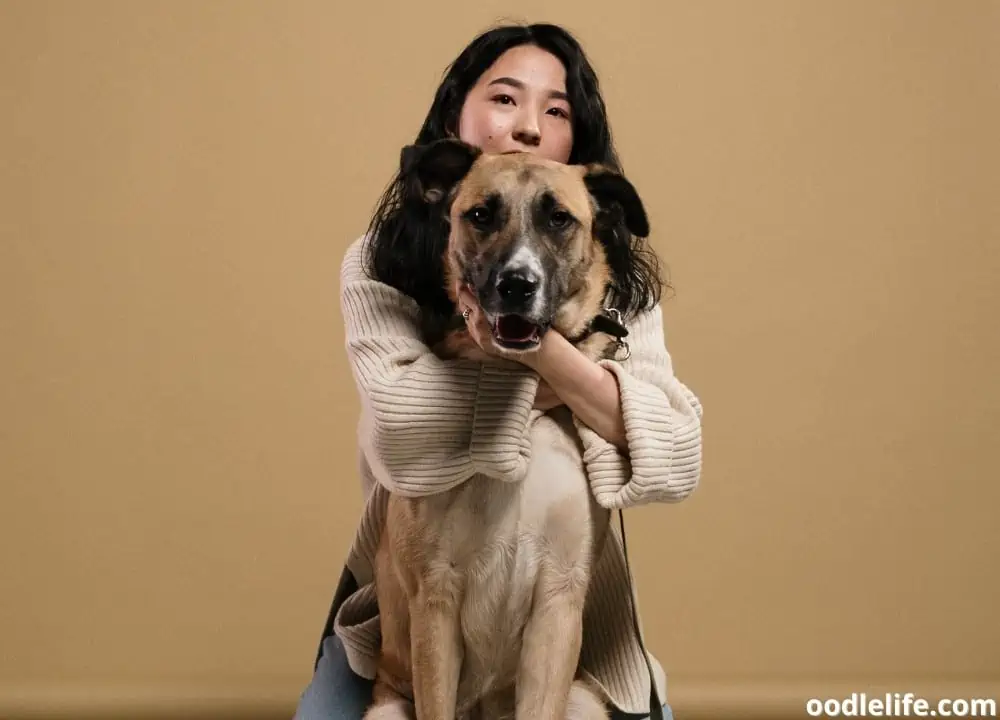Dogs Hair Standing Up Meaning (Hackles and Back Hair Explained)
Our beloved furballs are sentient, intelligent beings, just like us. Lacking the ability to verbally communicate, they communicate through vastly different ways, and at the core of it is body language.
They bow, bark, and stiffen their posture, wiggle their butts endearingly, and twitch their ears. Another powerful response is the rising of their hackles, or the hairs on the back of their necks.
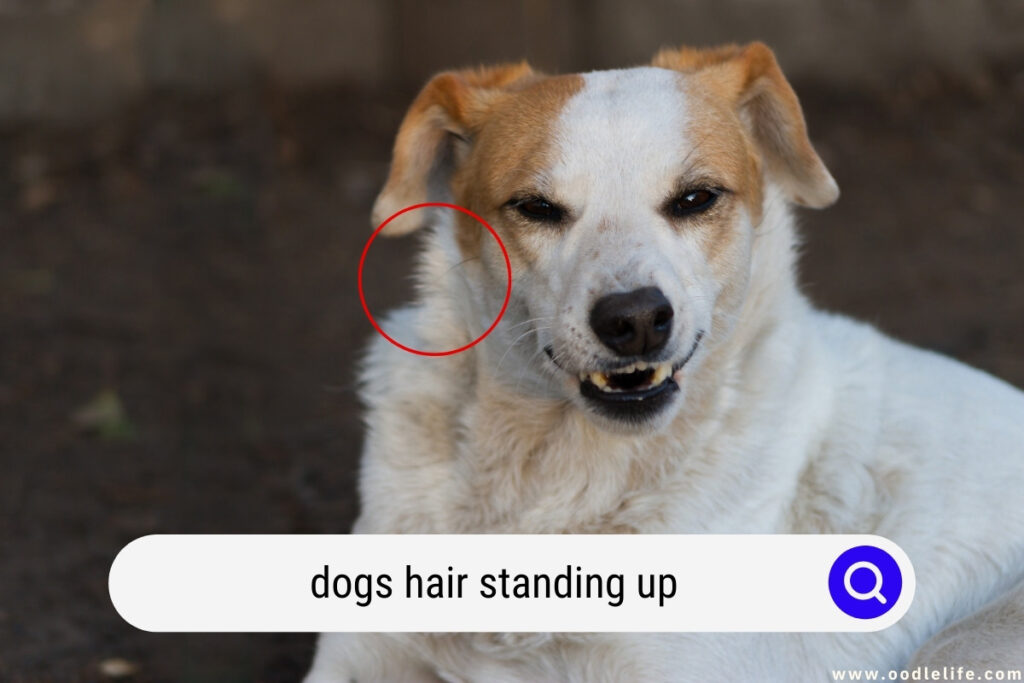
What Are Dog Hackles?
Hackles are a clump of hairs that rise along with a dog’s back and neck in response to fear or to demonstrate extreme stimulation, usually in the presence of another living thing.
Hackles are found in a variety of animals, not just dogs. When birds exert authority, they have hackles around their necks and fluff their feathers. Roosters, for example, have vividly-colored hackles and strut their plumage when they want to attract attention or are excited.
You know the classic image of the “Halloween Cat” that has its back arched and hair on the tail on end? That’s a cats thing, and many other animals do when they feel threatened, scared, or want to show aggression. It is to make them appear larger and more intimidating! ]
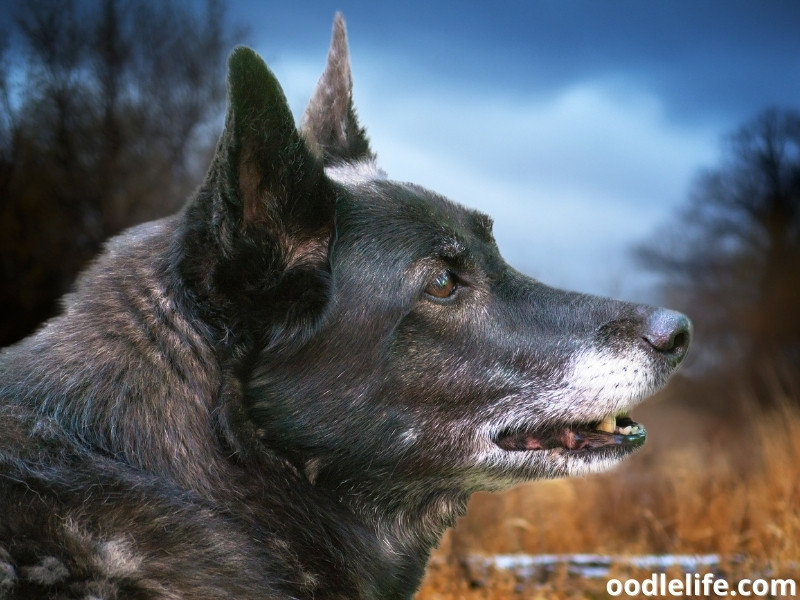
Why Do Dogs Raise Their Hackles?
Dogs with raised hackles are hypervigilant. It is a completely involuntary response to a range of feelings that a dog might be experiencing at that point including dominance, surprise, fear, uncertainty, or anxiety.
This instinctive raising of the hackles is called “piloerection,” and is caused by the neurological system involuntarily controlling a set of muscles called the arrector pili muscles.
There can be many triggers to piloerection, like meeting a new dog, a doorbell ringing, or another dog barking. Some dogs are more easily triggered than others.
For example, a twitchy, fearful dog might go about their day looking like a puffed-up hedgehog, while a calm, confident dog may barely raise their hackles even when walking down a busy street and other dogs yapping their heads off at him.
Because they are still learning about their surroundings and the world around them, some younger dogs raise their hackles more frequently. Their sense of safety may be a little shakier than that of a confident and fully grown older dog.
Dog hackles serve as a visual reminder to their trigger that they are large, dominant, and ready to protect themselves if necessary.
There have been a few accounts of dogs’ hackles being raised when they are not aroused by an external trigger, albeit this is quite rare. When the arrector pili muscles are not activated, dogs with neurologic illnesses may experience “malfunction” of the autonomic nerves, causing them to contract.
What Is Piloerection And What Are The Arrector Pili Muscles?
The rising of the hair at the back of the neck, otherwise known as hackles, is called piloerection. The muscles that control those hairs are called arrector pilo muscles.
The nervous system’s fight or flight response is what triggers the activation of the arrector pili muscles, and hence, piloerection. Many things can trigger a dog’s response, including hearing a strange noise, the doorbell, or meeting another dog.
The arrector muscles tense and flex around the hair follicles, pushing them up, and making the pooch look bigger and taller. This is a clear, visible sign that the dog is triggered and ready to react, so if you see raised hackles, you might want to back away slowly!
Piloerection and Humans
Have you ever wandered down a dark street or been in a foreboding environment and had goosebumps? The hairs on your arms rise, and the back of your neck feels all tingly?
Humans are not immune to piloerection. Same as our canine friends, our sympathetic nervous system causes the skin’s small muscles to contract, elevating the hair follicles and making your hairs stand straight up, resulting in goosebumps. Similarly, this prepares us for a fight or flight response.
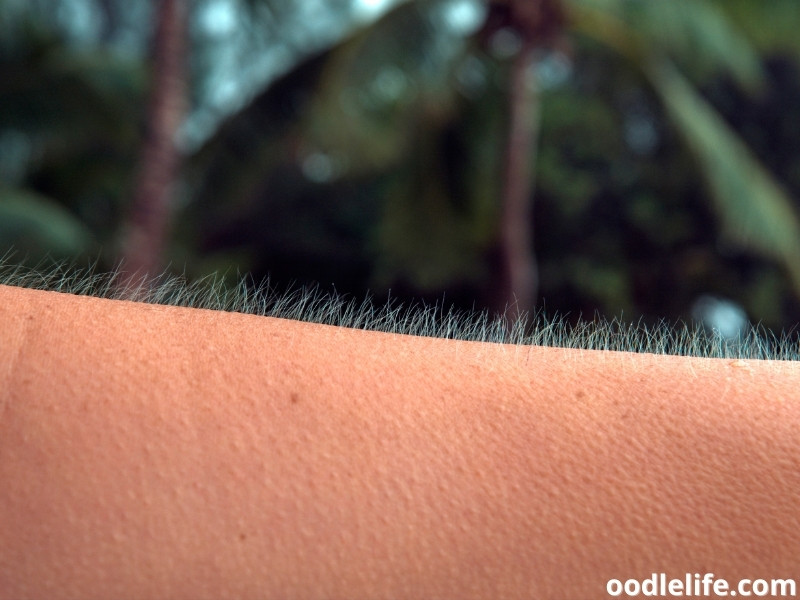
How Can You Tell If Your Dog Is Triggered?
Although a canine may not be able to express their dissatisfaction with a situation vocally, their actions and body language frequently speak louder than words, if you know how to listen.
A vast majority of dog bites can be avoided if we learn to read when a dog is agitated, aroused, or fearful.
When their hackles rise, the hairs stand around the back of the neck, the spine, just above the tailbone, and in-between the shoulders.
In addition, the whites of the eyes are barely seen when the dog is relaxed and content, and a dog will look straight at you. When the whites of the eyes start to show in a look we call “whale eyes”, a dog will continue focusing on you but may slightly avert their heads, resulting in more of the whites being shown.
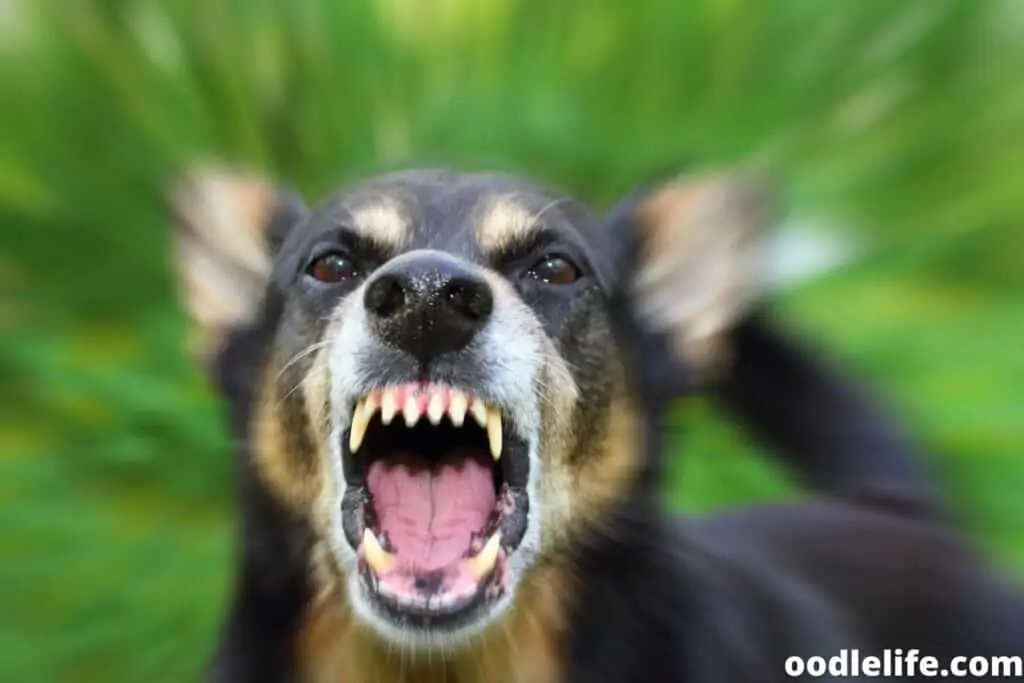
How To Deal With A Dog Whose Hackles Are Raised?
Dogs raise their hackles for many reasons, most of which are simply their way of communicating. When they meet other dogs, they may raise their hackles in warning, as if to say “hey, I see you.”
It is their way of going into “stranger danger” mode until they figure out what the other canines are about. As their way of defense, they may want to seem larger and stronger than they are.
This should only last a few moments, and once the prerequisite sniffing and introductions have been done, they should have sorted it out. Once your dog is relaxed, their arrector pili muscles will too, and their hackles will go down.
You might want to remember that piloerection is an involuntary process and nothing the dog can control. So if their hackles are raised for a short time, it could simply convey surprise, or a quick defensive move to protect themselves.
However, if their hackles are raised for a prolonged period, especially when meeting a new dog or person, you might want to pay attention to the other parts of their body language.
Raised hackles combined with other signs like growling, bared teeth, a rigid posture and tail, and not responding to your commands are telltale signs that your dog thinks it is in a hostile situation. This could turn bad real fast, so remove your dog from the situation right away.
You can avoid possible conflicts by diffusing the situation before it escalates into aggression.
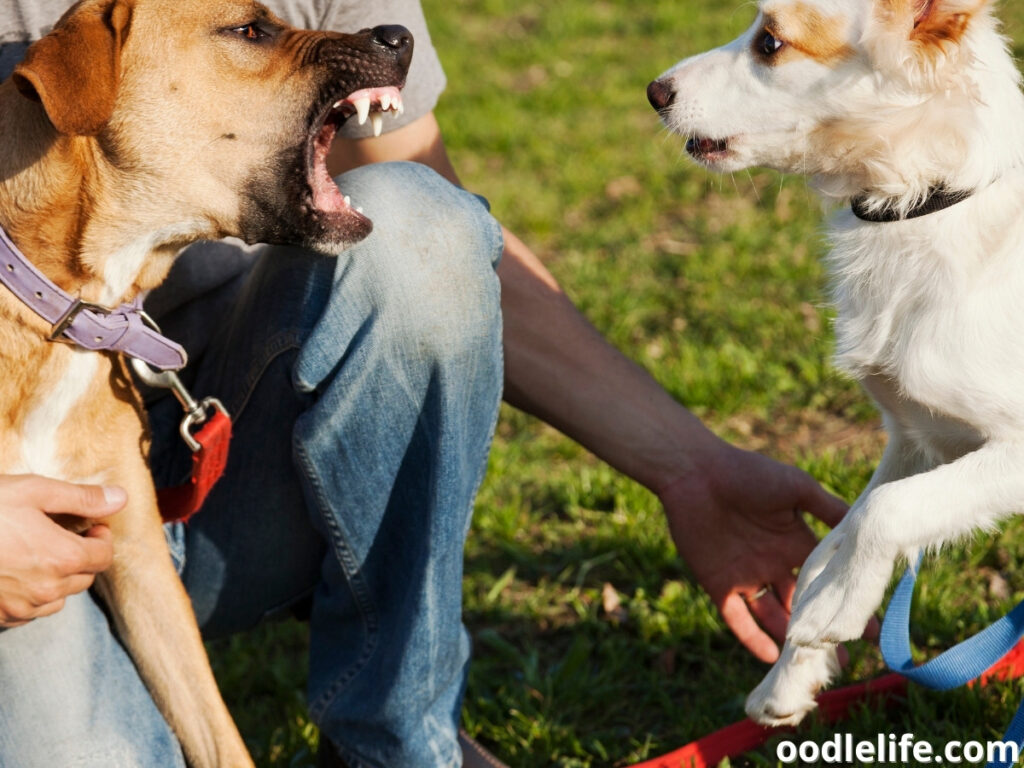
Do Hackles Rise In Play?
Hackles may rise even in playtime. Piloerection can be brought on by overstimulation, excitement, or surprise.
Don’t forget, it is involuntary, and if your dog seems to be bouncing around and having a blast of a time, it isn’t likely that the hackles are up because of dominance or aggression, but more like your pup is super-hyper-excited.
Still, it’s crucial to keep an eye on the dogs to make sure that everyone is playing nice.
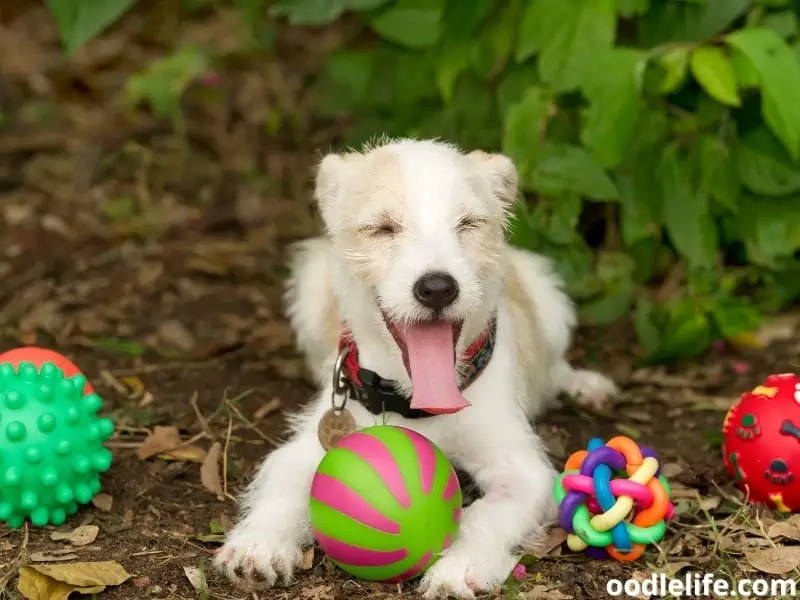
Do All Breeds Raise Their Hackles?
The natural response to adrenaline surges is experienced by all dog breeds, but it is more visible in some than others. As you can imagine, a dog with long, fluffy hair would have difficulty raising their hairs the whole way, although it would be hilarious if they could! Think canine pufferfish!
Piloerection is more visible in breeds with short, rigid coats like Chihuahuas, Pitbulls, and Greyhounds.
It could be hard to notice the hackles in some breeds with excessively curly hair like Poodles.
Some breeds have permanently raised hackles, like the Rhodesian Ridgeback. These hackles are characteristic of the breed and caused by the hairs growing forwards. It is not an indication of how the dog is feeling.
Dogs with raised hackles are more likely to be startled, scared, unsure of themselves, apprehensive, or even enthusiastic. When hunting dogs are hyper-focused and pointing at a bird of prey, their hackles often rise, or when a Border Collie “gives the eye” and is about to make cattle move.
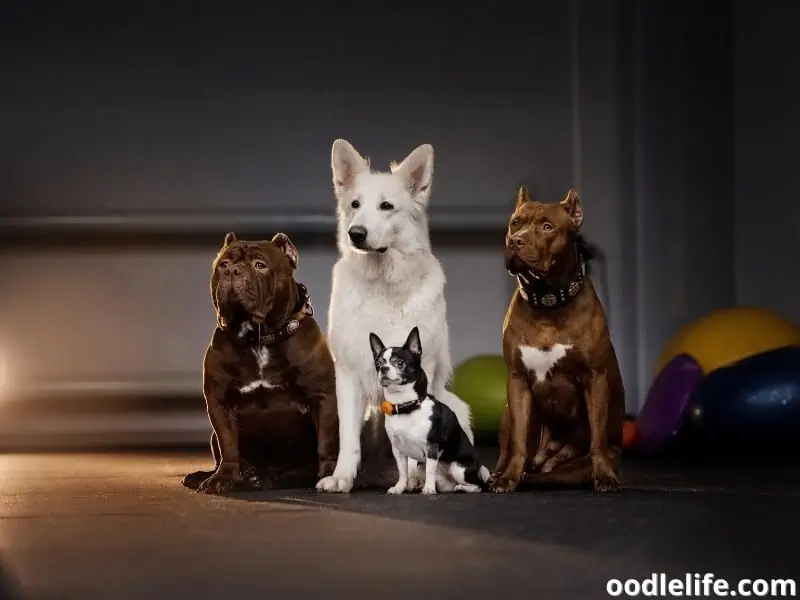
Bottom Line On Raised Hackles
When your dog’s hackles are raised, it’s critical to assess his full body language and analyze the situation. If you don’t, you risk producing an issue where none previously existed.
Because of how you respond, you may exacerbate the situation or make a mountain out of a molehill, confusing the dogs and yourself!
The easiest way to deal with a dog that has elevated hackles is to divert his attention and diffuse the situation until you figure out what’s causing it and see if there’s a pattern.
Be conscious of how the environment and social settings affect your canine companion when you’re out walking with him.
Check to see what’s around him if you notice him raising his hackles. Hackles only stay up for about 30 seconds or so and take about two minutes to settle back down, but if you notice prolonged periods of raised hackles that happen constantly, you might want to consult a behavioral professional to mitigate any future problems.
Just like any other dog’s body language, understanding their hackles is essential for ensuring our dogs have happy, well-balanced lives.
